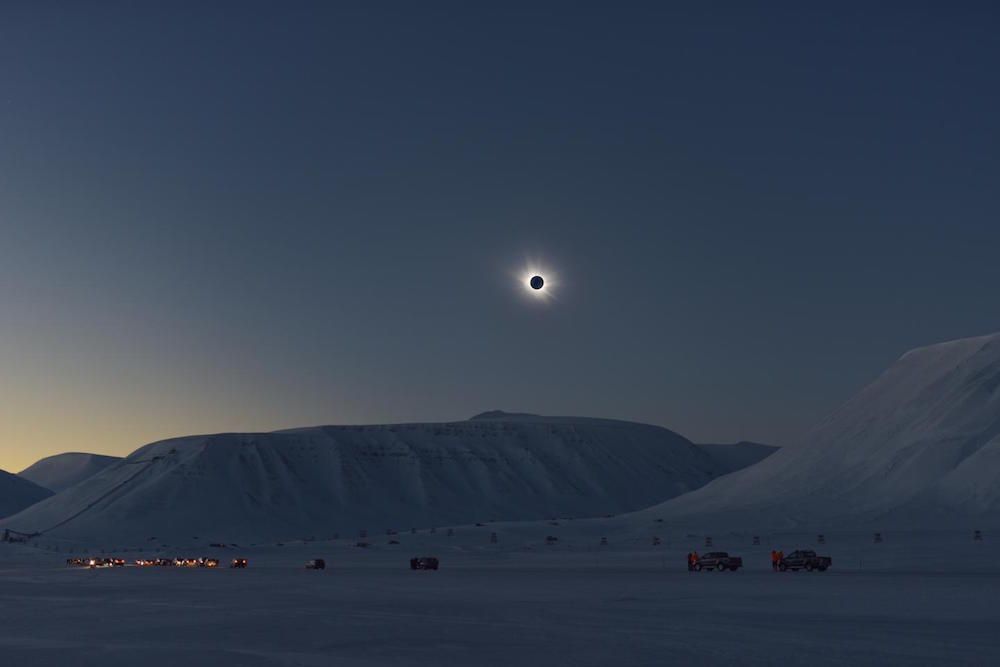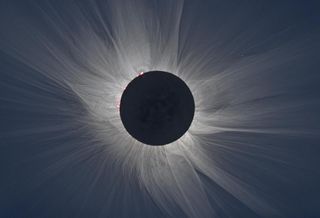Stunning Total Solar Eclipse Observed Over the Arctic (Photos)

A stark black disc haloed by streaks of light — a team of scientists captured this image of a total solar eclipse over the Arctic in March.
The international Solar Wind Sherpas team, led by astronomer Shadia Habbal at the University of Hawaii at Manoa, observed the March 20 solar eclipse from Longyearbyen on the island of Spitsbergen, in the Svalbard archipelago, located northeast of Greenland.
The researchers had to contend with constantly changing weather predictions, temperatures of minus 4 degrees Fahrenheit (minus 20 degrees Celsius) and the danger of polar bears. But thanks to preparation and perfectly clear conditions, the team successfully captured stunning shots of the solar corona, the envelope of ionized gas that surrounds the sun. [Sun Shots: Amazing Eclipse Images]

Svalbard has many microclimates, so to increase the chances of seeing the eclipse, the scientists observed it from two locations: inside the old Northern Light Observatory, and at an airport hangar 10 miles (16 kilometers) away.
At both sites, the team set up six digital SLR cameras fitted with lenses of different focal lengths, and four astrophotography cameras with special filters, to view the different colors of light given off by ionized iron atoms which are found in the hot outer layers of the corona. (Ionized atoms have been stripped of their electrons.)
At the observatory, the researchers used an instrument called a dual-channel imaging spectrograph to measure how these ions moved around the corona. At the airport, one researcher used a spectropolarimeter, a device he built himself to measure the sun's magnetic fields.
The snowy landscape was ideal for viewing shadow bands. These are light and dark parallel lines that appear on a plain-colored surface before and during totality, the period during which the moon is completely obscured by the sun. Totality lasted for 2 minutes and 20 seconds, and one large prominence — a big, bright eruption of hydrogen gas extending from the sun's surface — was visible with the naked eye. The sun was at an altitude of 12 degrees.
Sign up for the Live Science daily newsletter now
Get the world’s most fascinating discoveries delivered straight to your inbox.
Other members of the team observed the eclipsefrom three other locations: the Faroe Islands between Iceland and Norway, a Falcon Dassault jet flying at an altitude of 49,000 feet (15,000 meters) over the Faroe Islands, and an Irish Marine Corps DC-3 flying out of Dublin. All groups observed the total eclipse except for the group on the Faroe Islands, where rain got in the way.
The team presented its preliminary results on April 30 at the Triennial Earth-Sun Summit (TESS) meeting in Indianapolis.
Follow Tanya Lewis on Twitter. Follow us @livescience, Facebook & Google+. Original article on Live Science.

Most Popular
